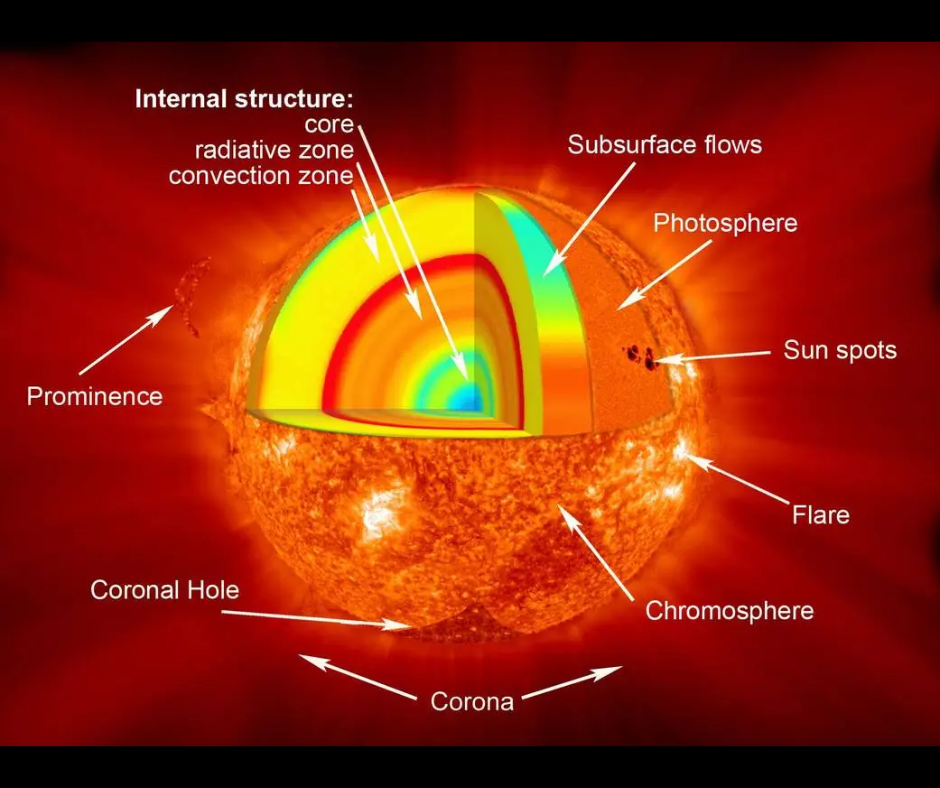Magnetic fields on the sun could solve longstanding solar heating mystery
"So far, no spacecraft mission has provided predictions regarding these phenomena close to the sun."

Scientists have long wondered why the hot soup of charged particles in our sun's atmosphere gets hotter moving away from the surface of the sun.
New research may have the answer, finding the super-hot nature of the sun's outer atmosphere or "corona" could be due to the intriguing behavior of small-scale waves in this nebulous plasma. These waves, known to scientists as "kinetic Alfvén waves" or "KAWs," are wave-like vibrations of magnetic fields manifested by motions in the sun's photosphere.
The findings could provide an important clue to decoding the seemingly physics-defying "coronal heating mystery" of why the corona is hundreds of times hotter than the visible solar "surface" or photosphere that radiates all the light we see from the sun.
The team behind this research, led by Syed Ayaz, a researcher at the University of Alabama in Huntsville, theorizes that as KAWs propagate, they dissipate and heat the sun's corona. Thus they serve as an important, albeit small-scale, mechanism by which energy is transferred within the sun's plasma.
Related: Watch a colossal X-class solar flare erupt from Earth-facing sunspot (video)
Ayaz said this phenomenon could explain why the sun's visible surface is around 10,000 degrees Fahrenheit (5,500 degrees Celsius) while the corona, which marks the uppermost part of the sun's atmosphere, is over 2 million degrees Fahrenheit (1.1 million degrees Celsius).
"For decades, Alfvén waves have been proven to be the best candidates for transporting energy from one place to another," Ayaz said in a recent statement. "So far, no solar spacecraft mission has provided predictions regarding these phenomena close to the sun."
Get the Space.com Newsletter
Breaking space news, the latest updates on rocket launches, skywatching events and more!
How the corona heating mystery defies physics
The majority of the sun's energy comes from its core, where nuclear fusion occurs. That means the sun should get hotter as one moves deeper within it. Most of the layers of our star obey this principle. However, the corona, despite being millions of miles further away from the solar core than the sun's surface, is still vastly hotter than the photosphere.
Ayaz and his colleagues studied the influence of KAWs in the plasma floating up to an altitude equal to 10 times the sun's radius. At such distances, when the waves interact with the sun's charged plasma, which is packed with "ions," atoms that have been stripped of their electrons, they "rapidly dissipate, completely transferring their energy to plasma particles in the form of heating," Ayaz said.
The team's findings suggest energy from the waves can reach the corona and heat it, although just how much they contribute to the temperature of the corona remains to be seen.

This new research "offers important insights into the critical problem of how energy in a magnetic field is transformed to heat a plasma comprising charged particles like protons and electrons," said Gary Zank, director of the Center For Space Plasma And Aeronomic Research at the University of Alabama who was not involved with work.
The findings of the latest study are strengthened by data from the European Space Agency's Solar Orbiter and NASA's Solar Dynamics Observatory (SDO). The SDO previously found that another kind of high-frequency, arch-like magnetic wave propagating through the corona can also dump large amounts of energy into the outer atmosphere of the sun over time, contributing to the heating of the million-degree-hot layer.
Similar processes that supply heat to the sun's corona were the focus of a recent NASA sounding rocket mission. The mission, named MaGIXS-2—short for the second flight of the Marshall Grazing Incidence X-ray Spectrometer, was launched into space for a few minutes in mid-July to collect X-rays from the sun.
Those rays are particularly telling of how often bursts of energy are released within our star, which may help scientists unveil more about how the corona is heated.
Even as scientists continue to piece together the puzzle of how the sun's corona gets so hot, other heating mechanisms related to the sun's magnetic field are being ruled out. For instance, scientists suspected certain S-shaped bends in the sun's magnetic field packed a lot of magnetic energy that is released into the surrounding plasma, heating it up and accelerating storm-sparking solar winds.
However, an analysis of Parker Solar Probe's first 14 laps around the sun reported in a separate paper published on Monday in The Astrophysical Journal Letters found no evidence of the sought-after feature inside the corona.
Mojtaba Akhavan-Tafti, a research scientist at the University of Michigan who led the study, noted in a statement that the Parker Solar Probe's upcoming trips into the sun, likely as soon as December this year, could reveal more insights into the decades-old mystery.
The team's study was published last week in The Astrophysical Journal.
Join our Space Forums to keep talking space on the latest missions, night sky and more! And if you have a news tip, correction or comment, let us know at: community@space.com.

Sharmila Kuthunur is a Seattle-based science journalist focusing on astronomy and space exploration. Her work has also appeared in Scientific American, Astronomy and Live Science, among other publications. She has earned a master's degree in journalism from Northeastern University in Boston. Follow her on BlueSky @skuthunur.bsky.social









